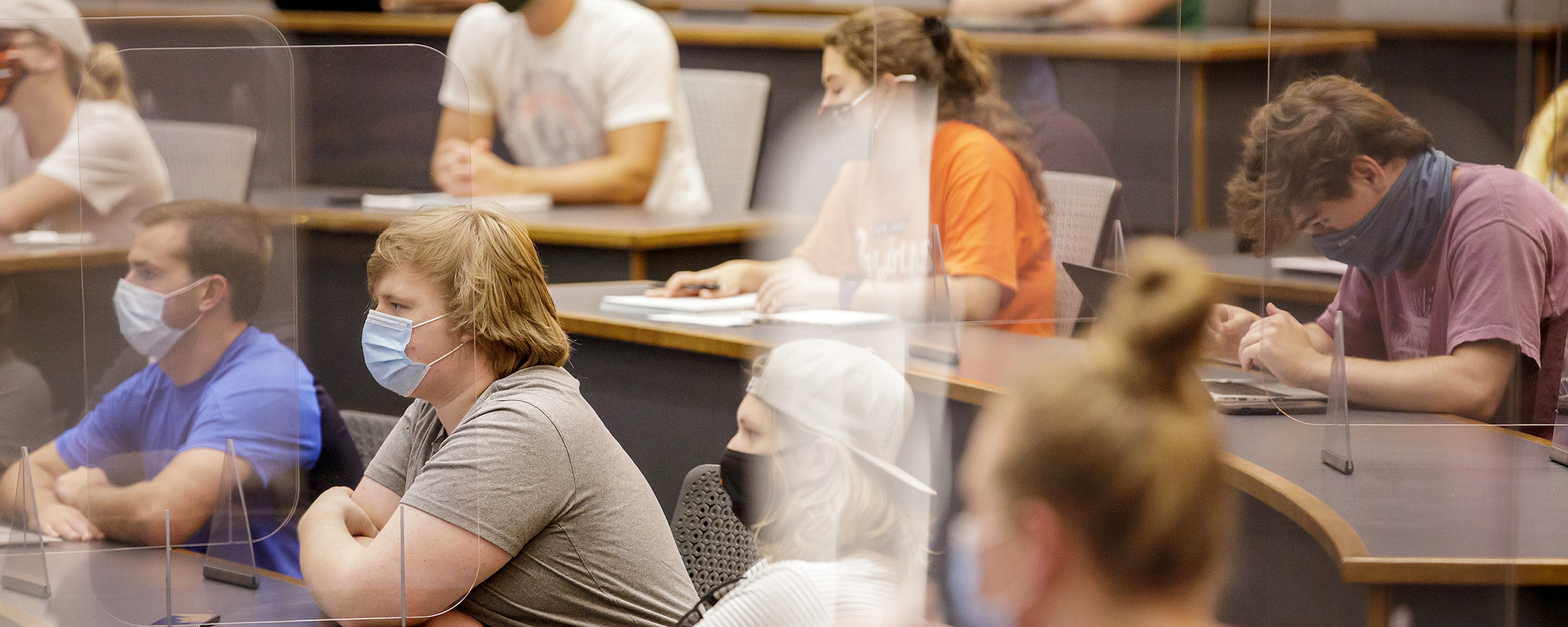
Balancing health and education
Monday, June 1, 2020
Media Contact: Bailey Stacy | Communications Coordinator, Marketing & Communications | 405-744-2700 | bailey.stacy@okstate.edu
A week before fall classes resumed last August at Oklahoma State University, Dr. Rick Wilson had football on his mind, but it wasn’t in anticipation of the coming season.
The Big Ten Conference had postponed all fall sports, including football, in another sign of the turmoil surrounding universities as they coped with the COVID-19 pandemic.
“Maybe that was the right decision, but couldn’t they have pursued it a little bit more?” said Wilson, a major college football fan and University of Nebraska graduate.
This summer at the Spears School of Business, administrators had to determine how to hold classes this fall while minimizing exposure to the coronavirus. OSU announced a hybrid approach to teaching that mixed virtual classes with socially distanced face-to-face instruction in classrooms. Students and instructors could choose to learn or teach entirely online.
As a professor and head of the Department of Management Science and Information Systems (MSIS), Wilson offered his analytics expertise to Spears Business Associate Dean Dr. Carol Johnson, who was in charge of planning classroom use while lessening the risks to health.
Johnson provided Wilson with data to model a solution to the puzzle. An estimated number of business students planning to return to campus, based initially on a student survey, and the number of classroom seats available after social distancing gave Wilson a starting point for a spreadsheet-based model to solve a multi-objective problem.
To allow the most students possible to experience face-to-face teaching, certain criteria were set for the model, including maximizing the number of classes assigned to classrooms for in-person instruction and minimizing the number of courses that had to be moved.
“We did the best we could to make sure our students got the best face-to-face experience possible,” Wilson said, “while also making sure we didn't totally torture the faculty.”
Wilson’s model for determining capacity of socially distanced classrooms has generated interest beyond Stillwater. The Informs Journal on Applied Analytics is reviewing a manuscript authored by Johnson and Wilson on the subject.
“Hats off to the Spears administration for leading the way at OSU by using an analytical approach to balancing the needs of students and the demands on faculty,” Wilson said. “We teach analytics, and this is practicing what we preach.”
Story By: Jeff Joiner | Discover@Spears Magazine
